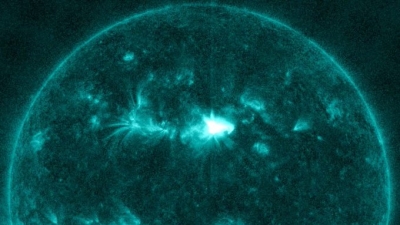Predicting space storms can now be possible: Study
By IANS | Updated: July 20, 2024 15:20 IST2024-07-20T15:18:43+5:302024-07-20T15:20:13+5:30
New Delhi, July 20 Recent advancements in space weather forecasting may soon enable scientists to predict the speed ...

Predicting space storms can now be possible: Study
New Delhi, July 20 Recent advancements in space weather forecasting may soon enable scientists to predict the speed and arrival time of coronal mass ejections (CMEs), commonly known as space storms, according to a study led by an Indian-origin researcher.
CMEs are bursts of gas and magnetic fields spewed into space from the solar atmosphere.
It typically takes several days to arrive at Earth and results in a shock wave causing a geomagnetic storm that may disrupt Earth's magnetosphere, compressing it on the day side and extending the night-side magnetic tail.
The team of Aberystwyth University in the UK has discovered that by analysing specific solar regions called 'Active Regions,' they can forecast CMEs more precisely – even before it has fully erupted from the Sun.
These regions have strong magnetic fields where CMEs originate.
They will present these findings at the Royal Astronomical Society’s National Astronomy Meeting in Hull, UK.
"By measuring how the strength of the magnetic field decreases with height, we can determine this critical height," said lead researcher, Harshita Gandhi, a solar physicist at Aberystwyth.
Using the data, they combined it with a geometric model to track CME speed in three dimensions, essential for precise predictions.
"Our findings reveal a strong relationship between the critical height at CME onset and the true CME speed. This insight allows us to predict the CME's speed and, consequently, its arrival time on Earth, even before the CME has fully erupted," Gandhi said.
CMEs can trigger geomagnetic storms, causing aurorae and potentially disrupting satellites, power grids, and communication networks.
Accurate CME speed predictions provide crucial advance warnings, aiding in better preparation and protection of vital systems.
"Understanding and using the critical height in our forecasts improves our ability to warn about incoming CMEs, helping to protect the technology that our modern lives depend on," Gandhi said.
Disclaimer: This post has been auto-published from an agency feed without any modifications to the text and has not been reviewed by an editor
Open in app